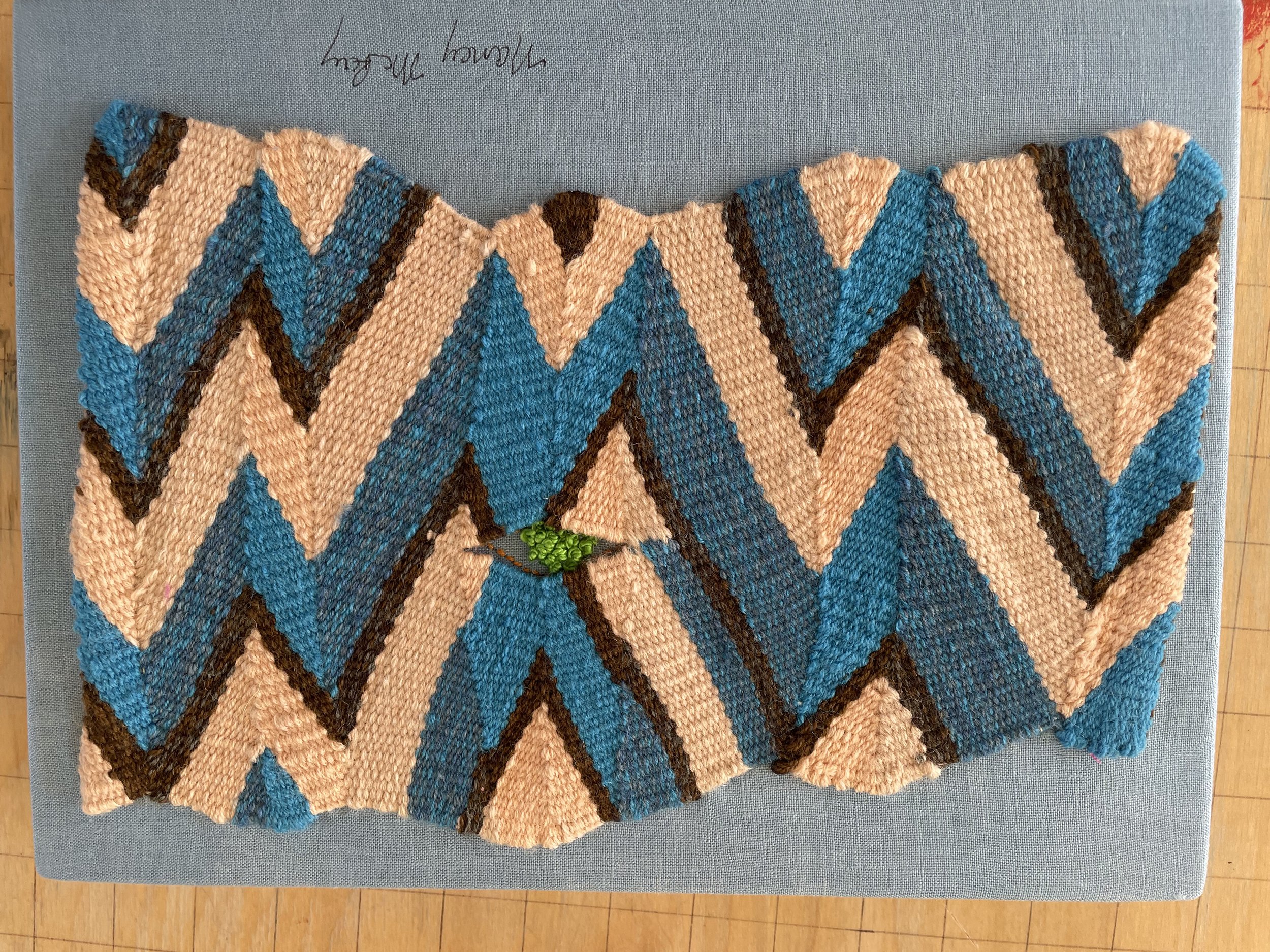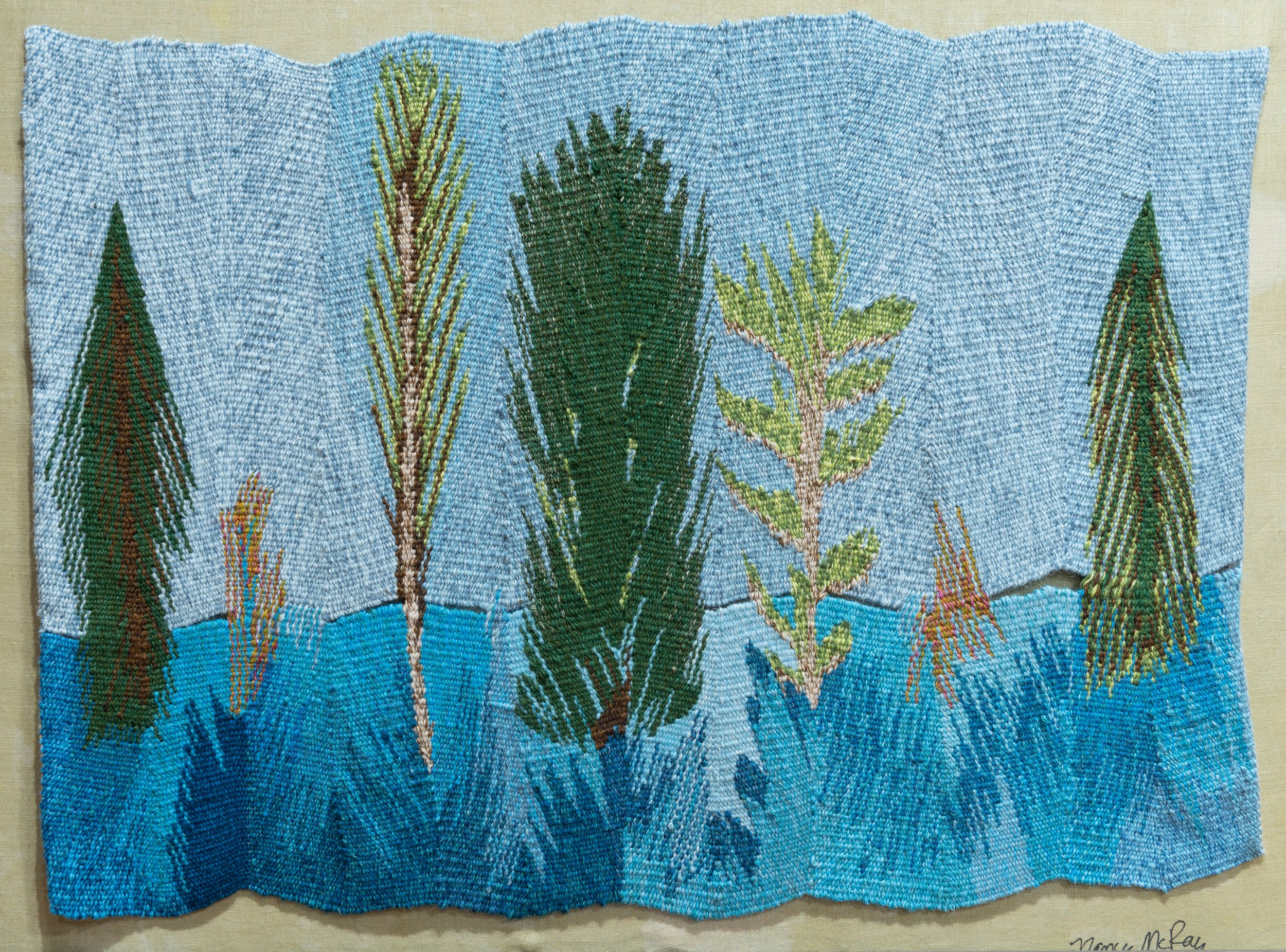Some thoughts on Wedge Weave
It began with a fascination with the tapestries of Sylvia Heyden. Her tapestries are endowed with movement, color, and are very lively. So I began to try to figure out how she did it
Wedge Weave is only a partial answer to Heyden’s genius works of weaving. But it is something I can sink my teeth into. I observed the work of Connie Lipert (connielippertart.com), and Deborah Corsini (deborahcorsini.com). Their work is dynamic, due to many diagonals, pulling or distortion of warp threads, and how color is used to emphasize direction. A lot of the work I see is built on a regular progression of the size of directional stripes and manipulation of color. Generally abstract - but always powerful.
I started with the basic idea of how wedge weave works. Beginning on one side, the weaver goes over two ( or 3 or 4 - this is somewhat arbitrary), and then back again. The next pass is over 4 warp threads, (or a multiple of the first number) and then back again. A diagonal line is beginning to be built. The weaver continues in this manner - over an additional 2 or so warp threads, and then back again to the edge, until the stripe is tall enough. At this point, the warp count is maintained, moving the top of the pass over by the same number of threads as the bottom of the pass each time.
Proceeding to the second side, until you are left with a tiny triangle to weave to finish off the first section. The you start again, this time building your wedge, (2 or 3 or so warps at a time) but going in the opposite direction from the base stripe.
Zig Zag
In this one, the warps were pulled a lot, creating a dynamic shape. I wanted to put a slit in the middle to see what might happen - it created a little diamond shaped opening - due to changing the direction of the wedges on either side. I embroidered a little pea on the mounting fabric to reward to close up viewer.
This is my attempt at building my wedge as described below. After deciding that I was making very nice angles, I decided to make things messy. All experiments.
Another way to build a diagonal shape is to build the triangle from the bottom up. (Kathe Todd Hooker - Shaped tapestry and Line in Tapestry). The weave begins with a base of some threads, lets say 10. A complete pass bring the weft back to the beginning edge. For the second pass, the weft is brought over only 8 warp threads. This subtraction is repeated until two warp threads are left. The last half pass goes all the way down to the base of the triangle, eccentrically. Since most of the passes are woven in straight weaving, with just one eccentric weft half pass per section, there is much less distortion or pulling of the warp threads.
The introduction of color really illustrates the difference between these two approaches. One feels much more stable. The other feels like weaving on a Tilt-O- Whirl.
Sky Trees Lake
Wedge Weave
In this one, I really learned a lot about creating images on a diagonal. It was a fun challenge to create a variety of trees utilizing the changing directions of the wedges. The slits here delineate the sky from the lake - standing in for land.
I wanted to experiment with weaving images on the diagonal. I also wanted to incorporate hard edges into the weaving. I asked Terry Olson of Damascus Fiber Arts Center how to get “interior selvedges.” She thought for a minute, and said - I just call those slits. And then she showed me how to add color for feather stitch, by adding a new color at the bottom of a wedge, traveling in opposition to the weft at top. Meet and Separate! These were the two concepts that somehow had not sunk in for me. Once I realized that I can use my tapestry tools, but on a diagonal, it opened up so many possibilities. Since then I have been doing lots of exploration. And it continues - there is so much more to be found out about this new to me approach to weaving on a diagonal. I haven’t cracked the Heyden way yet. And I don’t want to weave like Sylvia, not entirely. I want to weave like only I can - and I am still figuring out what that looks like.Wedge weave has opened me up to more experimentation, I feel free to let the weaving give me direction.
Birch Logs - still on loom. Three wedge sections.




